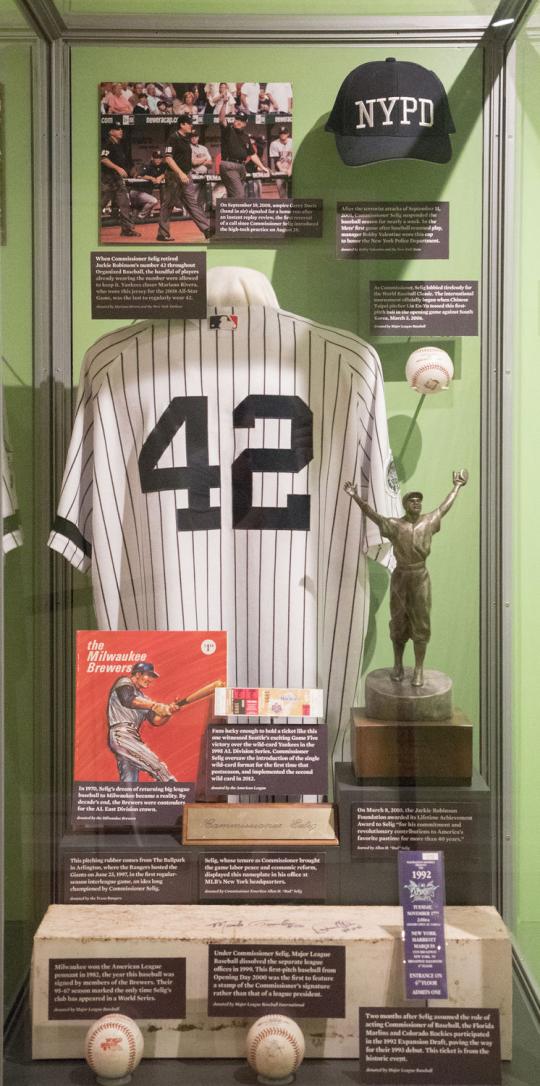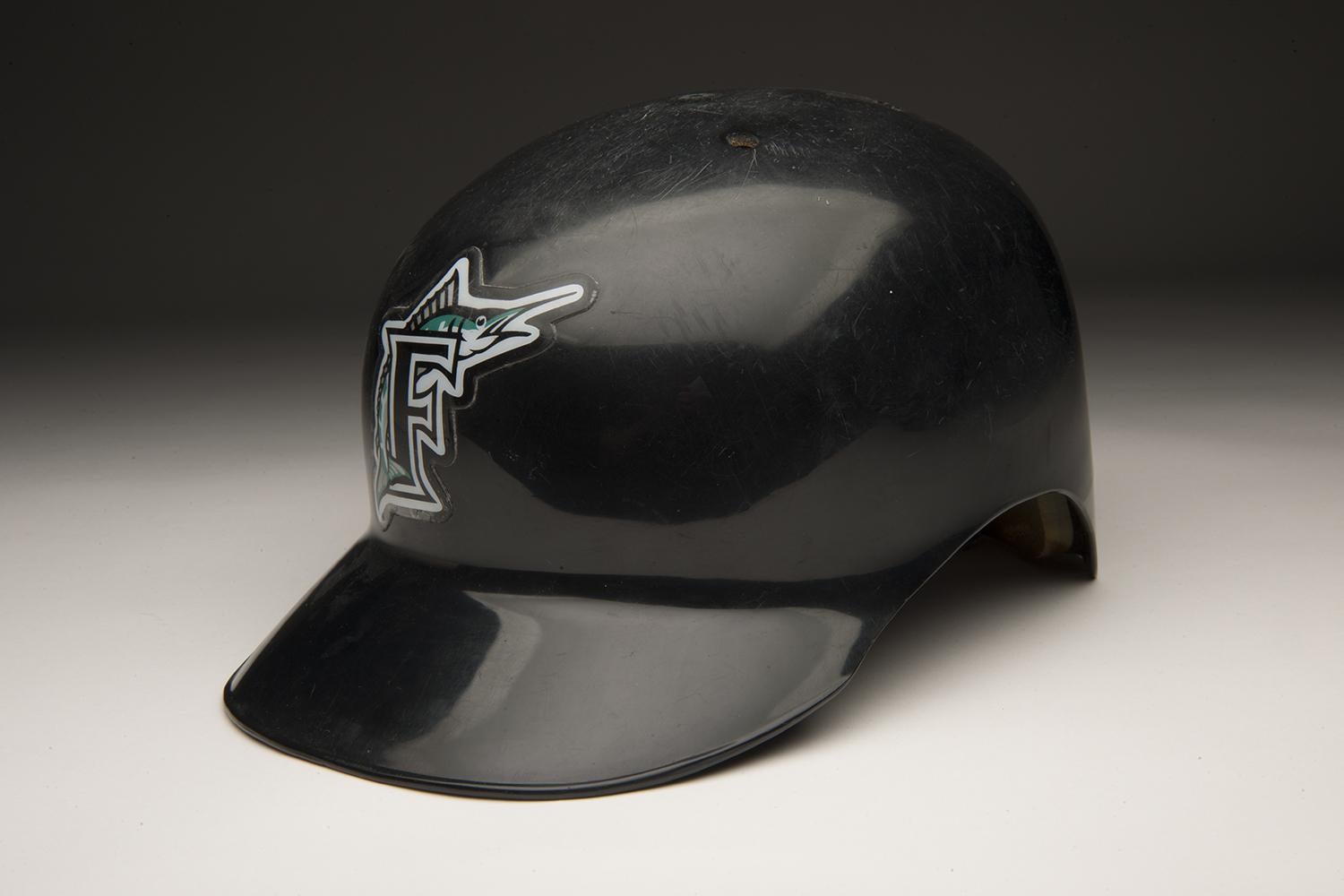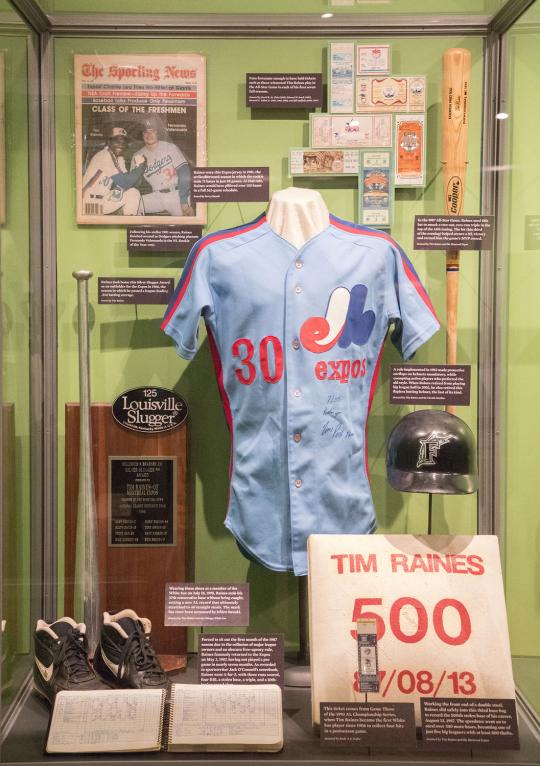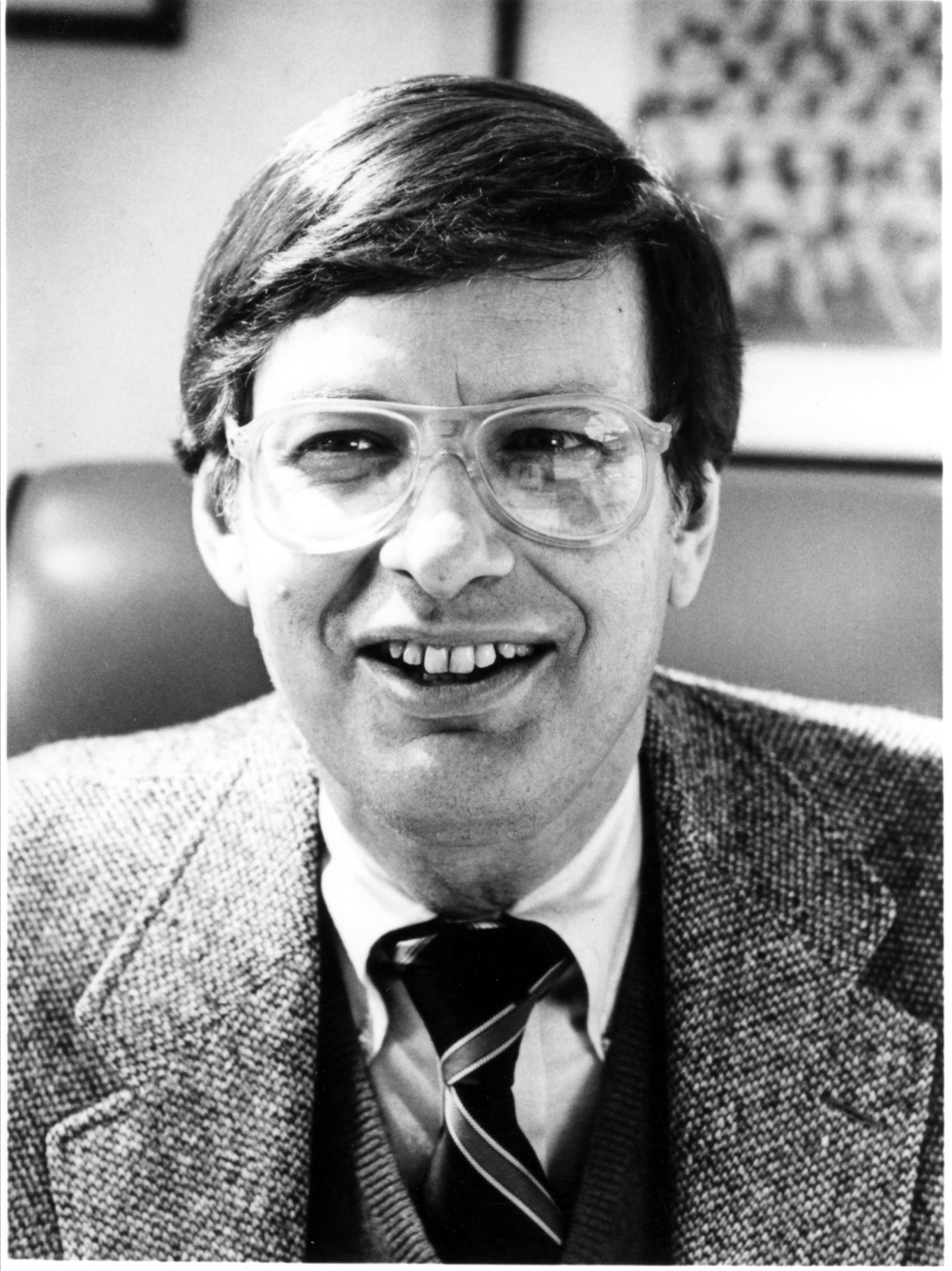- Home
- Our Stories
- New Inductee Cases Tell the Stories of the Class of 2017
New Inductee Cases Tell the Stories of the Class of 2017
At first glance, Cooperstown seems pretty quiet in the winter months. The sidewalks aren’t full of aspiring baseball players and their families and local homes are often topped with snow. But inside the offices at the Hall of Fame, things couldn’t be busier – especially after the new class of Hall of Famers is finalized.
“We start thinking about inductee cases before any announcements are made about who is an inductee, because we try to get a leg up,” said Hall of Fame Senior Curator Tom Shieber. “Once the ballot is finalized, we’ll look at the players and start to think about what items we have in the collection. We split the work up among our curatorial team: myself, John Odell, our Curator of History and Research, and Gabrielle Augustine, our Assistant Curator.”
The Curatorial department is then faced with the colossal task of combing through tens of thousands of artifacts in the Hall of Fame’s Collection to find the pieces that best represent each new inductee.
“We research the person and try to understand what it was that built up their Hall of Fame career,” Shieber said. “We generally come up with a timeline of important moments in their career and try to figure out what the real highlights are.”
The inductee exhibits, which were finalized this week, present an eclectic array of artifacts to tell the story of each Hall of Famer, from start to finish. Since Today’s Game Era electees Bud Selig and John Schuerholz were the first inductees named in this year’s class, their cases were the first to be mapped out.
“Initially, I thought they would provide more of a challenge,” Shieber said. “But if you look into Selig’s case, only two artifacts here have a direct link to him – his nameplate and this award given to him by the Jackie Robinson Foundation. The rest of them are about his impact.”
Most of the pieces in Selig’s case represent the profound changes he made in the game. Among them are a pitching rubber from MLB’s first interleague game, a ticket from the first postseason game featuring a Wild Card game in 1995 and Mariano Rivera’s Yankees jersey – the last player to regularly wear No. 42 before Selig retired the number throughout organized baseball.
For Schuerholz, the theme is of his uncanny ability to transform struggling organizations into winning franchises. Alongside his personal 1985 Kansas City Royals World Series trophy sits his 1995 World Series trophy won with the Braves, which made him the first general manager to win a championship in both leagues.
Once all the inductees were announced, the Curatorial team started narrowing down their artifact lists and determining what they might need from the Hall of Famers themselves.
“When our collection is missing objects we may need to tell some key stories, we contact the inductee, educate them on the concept of the exhibit, and essentially ask them to think like a curator,” Shieber said. “We’re looking for objects that help us tell their story. So we ask them: What do you still have that could help?”
For Raines, who had been generous in giving away personal memorabilia throughout his career, telling his story required some creativity. For example, Shieber chose a scorebook kept by Jack O’Connell, secretary/treasurer of the BBWAA, who was at Raines’ historic first game of the 1987 season, in which he went 4-for-5 with three runs scored.
Tim Raines wore this flapless Florida Marlins helmet during his last season in the major leagues, 2002. Exempt from a rule implemented in 1983 making protective earflaps on helmets mandatory, his helmet was the last of its kind. (Milo Stewart Jr. / National Baseball Hall of Fame and Museum)
“I really wanted to tell talk about Tim’s first game back in 1987, but I knew it was going to be tough,” Shieber said. “We didn’t collect anything from that game and it took a number of years for us to truly understand the impact of the game (following an offseason where Raines was unable to quickly sign a free agent contract due to what was ruled to be collusion by the owners). We ultimately selected a scorebook kept by Jack O’Connell, who donated it to us a few years ago. Jack was there then – and you can relive the game through his scorekeeping.”
Directly across the Museum hall from Raines sits Jeff Bagwell’s exhibit. Visitors can witness his success from an early age in the Cape Cod League through his 1988 MVP Award, and diagonally from that, can learn about his 1994 National League MVP-winning season. To cap it off, a commemorative pin from his number retirement ceremony in 2007 shows the impact he had on the Astros organization.
“The thought process is either, ‘What do I have and what will that allow me to tell’, versus ‘What stories do I want to tell and what do I have to tell it,’” Shieber said. “In different exhibits we do it in different ways. When it comes to inductee cases, it’s what stories do I need to tell, and what have I got.”
In the case of Iván Rodríguez, the story comes through, loud and clear. His dusty shin-guards covered with scratches speaks to his 2,427 games behind the plate, a major league record. Next to that, a catcher’s mitt with small tears in its pocket represents another major league record: Putouts by a catcher, with 14,864.
Shieber knows that it’s impossible to chronicle every great accomplishment. But collectively, the artifacts aim to answer the question: What made these five electees Hall of Fame-worthy?
“We cover pre-major league, post-major league career – it’s all about the full story of an inductee,” Shieber said. “We’ve covered everything from Mike Piazza coaching Team Italy in the WBC to Craig Biggio’s football career – we really aim to tell a story about the whole person.”
Alex Coffey is the communications specialist at the National Baseball Hall of Fame and Museum
Plan Your Visit
Related Stories
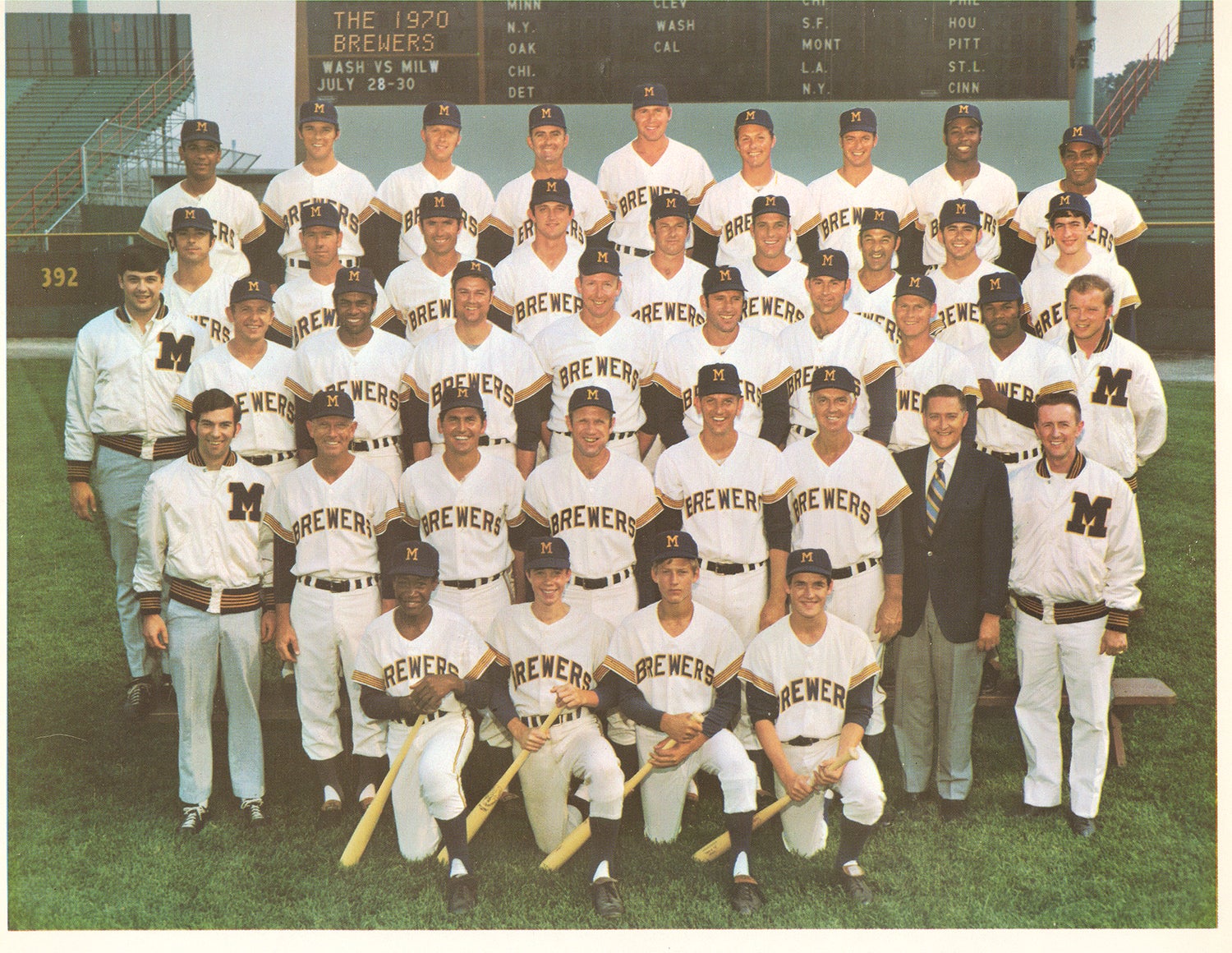
Bud Selig brought baseball back to Milwaukee
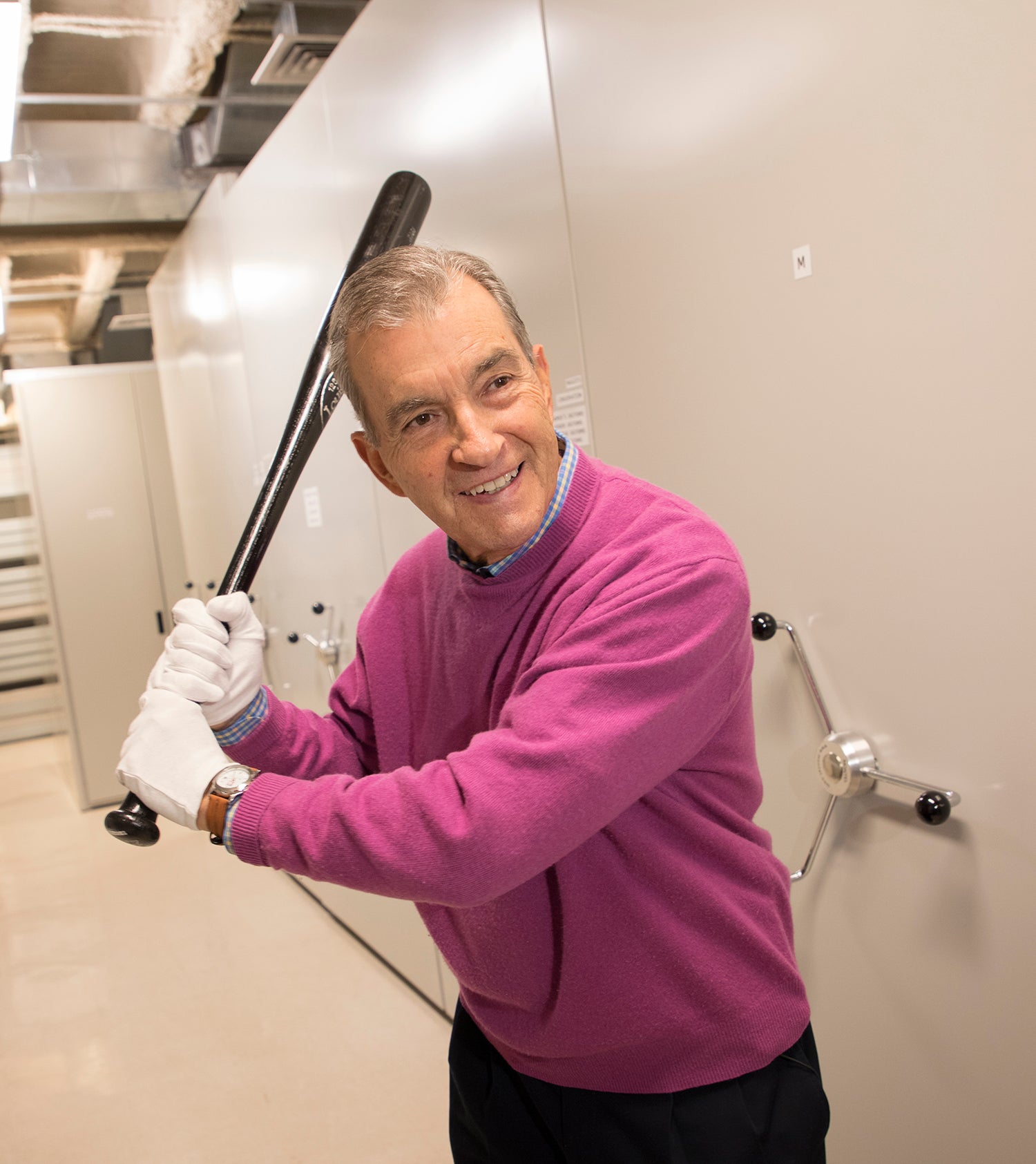
John Schuerholz ‘awed’ on Orientation Visit to Hall of Fame

Raines soaks in history at Hall of Fame
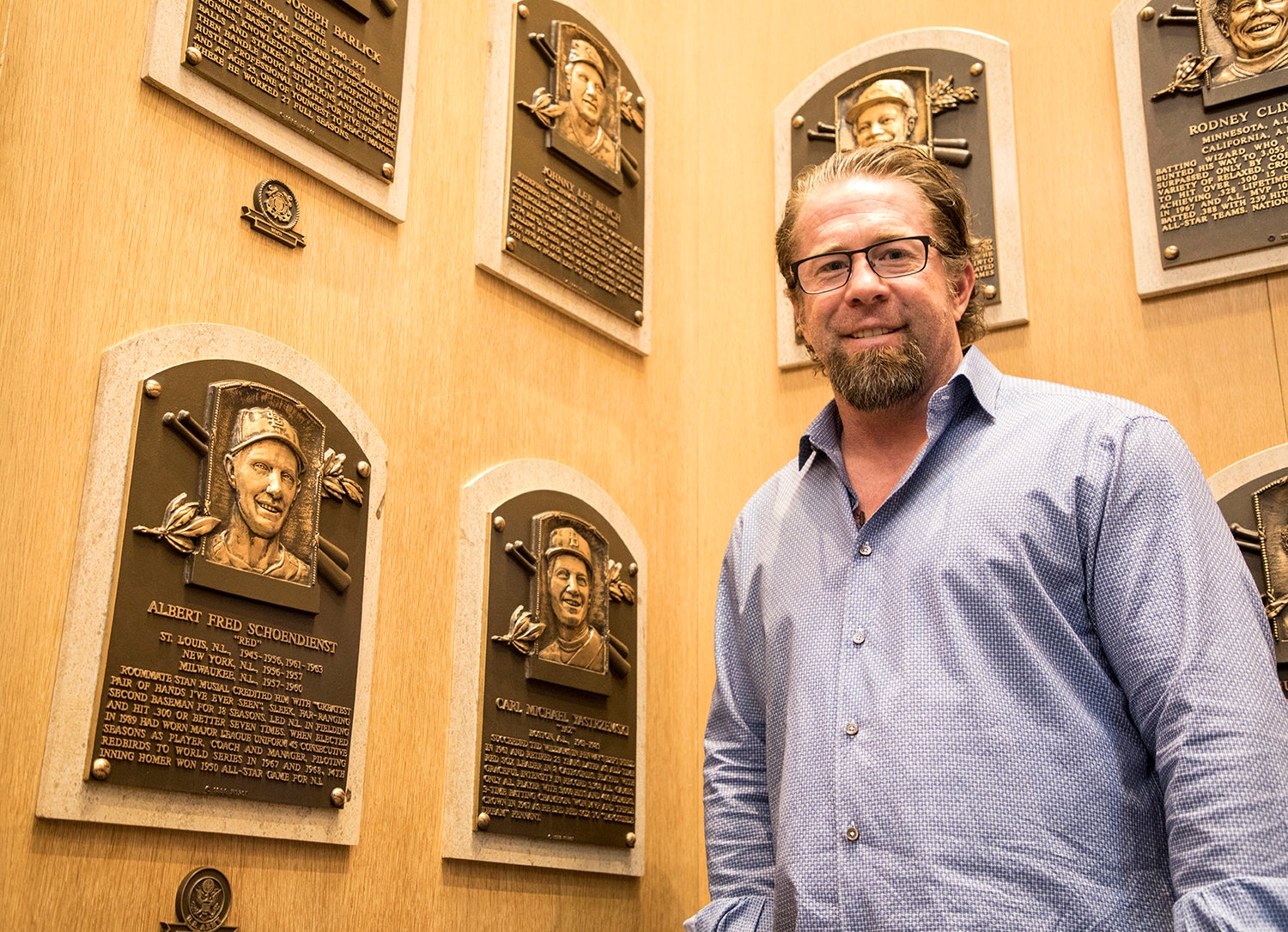
Humble Bagwell treasures Hall of Fame tour

Bud Selig brought baseball back to Milwaukee

John Schuerholz ‘awed’ on Orientation Visit to Hall of Fame

Raines soaks in history at Hall of Fame



